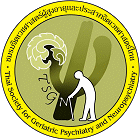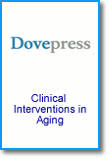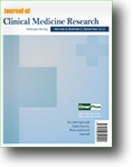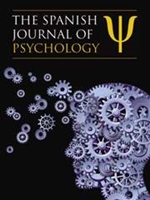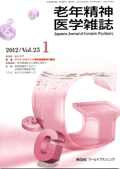Thymometer ปรอทอารมณ์
Thymometer เป็นแบบวัดที่พัฒนาขึ้นเองโดยณหทัย วงศ์ปการันย์ และทินกร วงศ์ปการันย์ ในปี พ.ศ. 2560 เป็นแบบสอบถามข้อเดียว (single measurement) เพื่อวัดอาการต่าง ๆ ที่สำคัญทางสุขภาพจิตหรือจิตเวช ได้แก่ ความเครียด ความรู้สึกได้รับการการช่วยเหลือ ประคับประคองจิตใจจากบุคคลอื่น ๆ (ได้รับการ support) ความรู้สึกว่าสามารถจัดการปัญหาต่าง ๆ ได้ (coping)
ผู้พัฒนาได้บัญญัติคำว่า Thymometer ขึ้นมา โดยนำคำว่า thymic, thymia ซึ่งเกี่ยวข้องกับอารมณ์ เช่น จาก Merriam-Webster dictionary thymocentric adjective thy·mo·centric ¦thīmə¦sen‧trik
: oriented toward feeling and emotion rather than toward intellect and morality
(อ้างอิง Thymocentric Definition & Meaning - Merriam-Webster)
ส่วนคำว่า meter ก็คือ การวัด
ดังนั้น Thymometer จึงมีความหมายว่า การวัดอารมณ์ความรู้สึก คำภาษาไทย ใช้คำว่า ปรอทอารมณ์ ทำให้เข้าใจง่าย
Thymometer หรือ ปรอทอารมณ์
ประกอบด้วยข้อคำถามที่แยกกันใน 5 ประเด็น ได้แก่
1. Thymometer 1 : แบบประเมิน ความรู้สึกได้รับการช่วยเหลือ ประคับประคองจิตใจจากบุคคลสำคัญ เพื่อน และ ครอบครัว
2. Thymometer 2: แบบประเมิน ความรู้สึกในการรับมือกับปัญหา
3. Thymometer 3: แบบประเมิน ความรู้สึกได้รับเครียด
4. Thymometer 4: แบบประเมิน ความรู้สึกเศร้า
5. Thymometer 5: แบบประเมิน ความรู้สึกครื้นเครง
โดยแต่ละข้อมีมาตรวัดตั้งแต่ 1-10 ตามระดับความรุนแรง โดยผู้ตอบจะให้คะแนนในข้อที่ตรงกับความรู้สึกของตนเองมาก ผลการทดสอบคุณสมบัติทางจิตวิทยาในนักศึกษาจำนวน 342 ราย พบว่ามีค่า Thymometer 1 มีความสัมพันธ์กับแบบวัดความรู้สึกได้รับการช่วยเหลือ ประคับประคองจิตใจแบบพหุมิติ (multidimensional scale of perceived social support ) ( r = .60 , p <.001), Thymometer 2 มีความสัมพันธ์กับแบบวัดความรู้สึกเครียด ในมิติการจัดการกับปัญหา ( r = .47 , p <.001), Thymometer 3 มีความสัมพันธ์กับแบบวัดความรู้สึกเครียด ในมิติ ความรู้สึกเครียด ( r = .66 , p <.001),
ปัจจุบัน( 5 กค 2566)ได้มีการให้คะแนนจุดตัด (cut-off) สำหรับคำแนนรวม Thymometer เพื่อทำนายภาวะซึมเศร้า จากข้อมูลที่ศึกษาพบว่า cut-off score 18 คะแนนขึ้นไปจะสามารถทำนายการเกิดโรคซึมเศร้าทางคลินิกได้ ซึ่งจุดตัดดังกล่าวให้ค่า sen = 72.62%, spec = 88.89%, AUC = 0.893 , z= 20.393, p<.0001) ผลการวิจัยอยู่ในระหว่างนำไปเผยแพร่ในวารสารต่างประเทศ
Thymometer มีสองฟอร์ม ได้แก่ แบบ 3 ข้อ และ แบบ 4 ข้อ โดยได้เพิ่มคำถามข้อที่ 4 ที่วัดเกี่ยวกับซึมเศร้าเข้ามา ตามที่ปรากฏ ในภาพ
ปัจจุบัน (2568) มี 3 ฟอร์ม ได้แก่ แบบ 3 ข้อ แบบ 4 ข้อ และ แบบ 5 ข้อ โดยเพิ่มคำถามข้อที่ 5 ที่วัดเกี่ยวกับอารมณ์ครื้นเครงเข้ามา ตามที่ปรากฏ ในภาพ
Thymometer®, developed by Nahathai Wongpakaran and Tinakon Wongpakaran in 2017, is a single item measure of perceived social supports, coping, and perceived stress, depressed, and expansive mood. Each is a 10-Likert type response, from “1” not at all to “10” accordingly to severity of perception and ability.
The developers coined the term "Thymometer" by combining the words "thymic" and "thymia," which are related to emotions. For example, according to the Merriam-Webster dictionary, "thymocentric" is defined as being oriented toward feeling and emotion rather than intellect and morality.
As for the word "meter," it refers to measurement. Therefore, "thymometer" can be understood as the measurement of emotions and feelings. In Thai, the term "ปรอทอารมณ์" is commonly used, making it easily understandable.
Thymometer is a single item measure of perceived social supports, coping, and perceived stress. Each is a 10-Likert type response, from “0” not at all to “10” according to severity of perception and ability.
Each Thymometer shows convergent validity with related measures by that Thymometer 1 is significantly related to multidimensional scale of perceived social support ( r = .60 , p <.001), Thymometer 2 is significantly related to Coping subscale of perceived stress ( r = .47 , p <.001), Thymometer 3 is significantly related to Stress subscale of perceived stress ( r = .66 , p <.001).
Currently (5th July 2023), a cut-off score has been established for the total score of the Thymometer to predict the occurrence of clinical depression. Based on the study's findings, a cut-off score of 18 or higher can predict the presence of clinical depression. The aforementioned cut-off point yields the following values: sensitivity (sen) = 72.62%, specificity (spec) = 88.89%, area under the curve (AUC) = 0.893, z = 20.393, p < .0001. The research findings are currently being prepared for publication in international journals.
Currently (2025), there are three forms: the 3-item, 4-item, and 5-item versions. The 5-item version includes an additional question measuring cheerful mood, as shown in the image.


Download the meter here--> Thymometer copyright.jpg
Updated version
Thymometer 4D jpg new 1-10.jpg

Additional meter ( for manic, hypomanic etc )

5. รู้สึกมีพลังใจเพียงใด





